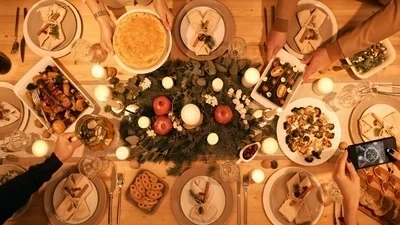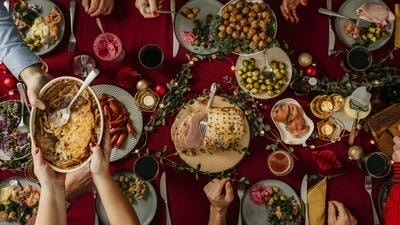
Throughout the world, holidays are celebrated with rich traditions, vibrant festivities, and, most importantly, food. Traditional holiday foods not only signify cultural heritage but also bring families and communities together. Each dish tells a story, reflects the values of its culture, and showcases the unique ingredients that characterize regional cuisines.
Food plays a crucial role in cultural identity and expression. Traditional holiday foods are often steeped in history and reflect the agricultural practices and available resources of a region. They can symbolize abundance, prosperity, and good fortune, and the act of sharing meals during celebrations reinforces bonds among family members and friends.
For many, holiday foods are intertwined with childhood memories, evoking feelings of nostalgia. The aroma of baking gingerbread or the taste of spiced cider can transport individuals back to family gatherings, creating a sense of comfort and belonging. These shared memories are vital for strengthening familial and cultural ties.
The preparation and consumption of traditional holiday foods are often linked to specific rituals. These rituals may include elaborate cooking processes, family recipes handed down through generations, or communal eating practices that enhance the sense of community during celebrations. Such ceremonies cultivate an appreciation for history and heritage.

In the United States and Canada, Thanksgiving is one of the most significant holidays, marked by the tradition of sharing a festive meal. The centerpiece is usually a roasted turkey, symbolizing gratitude and abundance.
Culinary Highlights:
Thanksgiving meals often emphasize the importance of sharing with others and reflecting on the blessings of the past year.
In the United Kingdom, Christmas pudding is a beloved holiday dessert with deep historical roots. Traditionally served on Christmas Day, this steamed dessert is rich and heavy, made with a mix of dried fruits, spices, and suet.
Culinary Highlights:
Christmas pudding encapsulates the festive spirit and is often a focal point of Christmas dinner, with families gathering to enjoy and celebrate.
In Germany, stollen is a fruit bread that is a traditional Christmas treat. The bread is rich and dense, studded with candied fruits, nuts, and spices.
Culinary Highlights:
Stollen symbolizes the Christmas spirit and is often gifted or shared among friends and family.
In China, mooncakes are traditional pastries consumed during the Mid-Autumn Festival, symbolizing family reunions and the harvest. These round cakes are often filled with lotus seed paste and salted egg yolks.
Culinary Highlights:
Mooncakes represent unity and are often beautifully packaged, making them popular gifts during the festival.
During Diwali, the Festival of Lights, Indian households prepare a variety of traditional sweets to celebrate the victory of light over darkness. These sweets hold special significance and are widely exchanged.
Culinary Highlights:
These sweets embody the spirit of generosity and joy during the festival, symbolizing good luck.
In Mexico, tamales are a cherished traditional dish that is often made during celebrations, including Christmas and Día de los Muertos (Day of the Dead). Tamales consist of masa (corn dough) filled with various ingredients, wrapped in corn husks or banana leaves, and steamed.
Culinary Highlights:
Tamales hold cultural significance and symbolize unity and festivity throughout Mexico.
Jollof rice is a beloved dish throughout West Africa, particularly in Ghana and Nigeria, often prepared for festive occasions and gatherings. It is a flavorful one-pot dish made with rice, tomatoes, onions, and various spices.
Culinary Highlights:
Jollof rice represents unity and celebratory spirit among families, showcasing regional pride and culinary traditions.
Dolma is a popular dish in both Turkish and Greek cuisines, consisting of grape leaves stuffed with rice, herbs, and spices. It is often served during significant holidays and family gatherings.
Culinary Highlights:
Dolma symbolizes hospitality and abundance, often shared among family and friends during festive occasions.
While traditional holiday foods are often rich in flavor and cultural significance, they can vary significantly in nutritional value. Many holiday dishes are indulgent, high in sugars, fats, or carbohydrates. Here are some health considerations:
Portion Control: Traditional holiday meals often encourage large portions. Enjoying moderate servings can help balance indulgence while preventing overconsumption.
Ingredient Substitutions: Many traditional recipes can be modified to include healthier ingredients. For instance, using whole grains instead of refined grains can enhance the nutritional profile of dishes.
Mindful Eating: Encouraging families to savor each bite and enjoy the flavors can foster a healthier relationship with food, emphasizing quality over quantity.
Cultural traditions can be respected while embracing healthier versions of traditional holiday foods. Here are some ideas to consider:

Traditional holiday foods are a vibrant tapestry woven from culture, history, and shared experiences. They serve as a delicious reminder of our heritage, evoke nostalgia, and bring families and communities closer together. By exploring the diverse flavors and traditions behind these dishes, we gain a deeper appreciation for the culinary arts and the importance of food in our lives.
As we celebrate in our kitchens, let us honor these traditions while embracing the opportunity to create healthier versions of our favorite holiday meals. By doing so, we preserve the essence of what these foods represent—joy, connection, and a sense of belonging—while also cultivating a healthier future for generations to come.